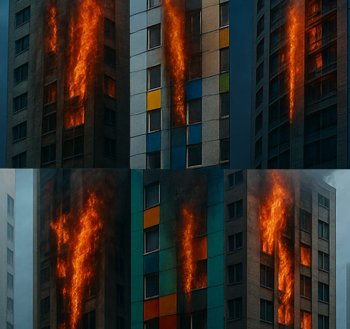Bund
Bunds provide a ‘second line of defence’ for controlling hazards events. They are a form of enclosure that surrounds drums or tanks, providing emergency containment in the event of a failure. Bunds can help to stop hazardous materials such as flammable or toxic liquids leaking onto the ground or into surface water, protecting the environment from chemical spills.
Typically, bunds are constructed using concrete or masonry, which may be reinforced and lined depending on the volume and nature of the material being stored. They wrap around single tanks or a group of tanks and provide secondary containment should the primary containment fail.
In many countries bunds are a legal requirement for the storage of certain materials. In the UK, it is best practise to bund hazardous materials unless a risk assessment shows that this is not necessary.
Generally, bund capacity should be 110% of the largest tank or 25% of the total tank capacity, whichever is the greater. Space can be limited on many sites, so a small footprint can be desirable. The higher the bund walls the smaller the area required for the same bund capacity. However, there are limits as to how high the bund walls can be in order that they do not prevent firefighting or more general access and to allow natural ventilation. As a consequence, they are typically 1 to 1.5 metres high. However, in some circumstances they may be as high as the tanks themselves.
Ideally, the bund should be protected from rain accumulation, if not rainwater will need to be removed at regular intervals, to ensure the bund has sufficient remaining capacity in the event of a tank failure. This can be achieved by a valved drain that is opened to remove accumulated water. However, regimes must be in place to ensure that the valve is generally closed, and to prevent drain blockage.
It is normal to limit the number of tanks in a single bund to 60,000 m3 total capacity. Incompatible materials should have separate bunds.
Bunds should be hydrostatically tested after construction is completed, before tanks are positioned within the bund walls. It is important that bunds are tested regularly after being constructed to ensure they continue to provide the protection that is required.
Alternatives to bunds include earth dikes, sumps and interceptors.
In addition, bunded tanks are available that include a second skin protecting agianst leakage and meaning a separate bund wall may not be necessary.
NB The SuDS Manual published by CIRIA in 2015 defines a bund as: ‘A barrier, dam or mound usually formed from earthworks material and used to contain or exclude water (or other liquids) in/from an area of the site.’
Containment systems for the prevention of pollution, Secondary, tertiary and other measures for industrial and commercial premises (CIRIA C736), published by CIRIA in 2014, defines a bund as: ‘A facility (including walls and a base) built around an area where potentially polluting materials are handled, processed or stored. This is for the purposes of containing any unintended escape of material from that area until such time as remedial action can be taken. Bunds are usually structurally independent from the primary containment tank.’
See also: Banding for an alternative definition.
[edit] Related articles on Designing Buildings Wiki
Featured articles and news
Government consultations for the summer of 2025
A year of Labour, past and present consultations on the environment, the built environment, training and tax.
CMA competitiveness probe of major housing developers
100 million affordable housing contributions committed with further consultation published.
Homes England supports Greencore Homes
42 new build affordable sustainable homes in Oxfordshire.
Zero carbon social housing: unlocking brownfield potential
Seven ZEDpod strategies for brownfield housing success.
CIOB report; a blueprint for SDGs and the built environment
Pairing the Sustainable Development Goals with projects.
Types, tests, standards and fires relating to external cladding
Brief descriptions with an extensive list of fires for review.
Latest Build UK Building Safety Regime explainer published
Key elements in one short, now updated document.
UKGBC launch the UK Climate Resilience Roadmap
First guidance of its kind on direct climate impacts for the built environment and how it can adapt.
CLC Health, Safety and Wellbeing Strategy 2025
Launched by the Minister for Industry to look at fatalities on site, improving mental health and other issues.
One of the most impressive Victorian architects. Book review.
Common Assessment Standard now with building safety
New CAS update now includes mandatory building safety questions.
RTPI leader to become new CIOB Chief Executive Officer
Dr Victoria Hills MRTPI, FICE to take over after Caroline Gumble’s departure.
Social and affordable housing, a long term plan for delivery
The “Delivering a Decade of Renewal for Social and Affordable Housing” strategy sets out future path.
A change to adoptive architecture
Effects of global weather warming on architectural detailing, material choice and human interaction.
The proposed publicly owned and backed subsidiary of Homes England, to facilitate new homes.
How big is the problem and what can we do to mitigate the effects?
Overheating guidance and tools for building designers
A number of cool guides to help with the heat.
The UK's Modern Industrial Strategy: A 10 year plan
Previous consultation criticism, current key elements and general support with some persisting reservations.
Building Safety Regulator reforms
New roles, new staff and a new fast track service pave the way for a single construction regulator.
























